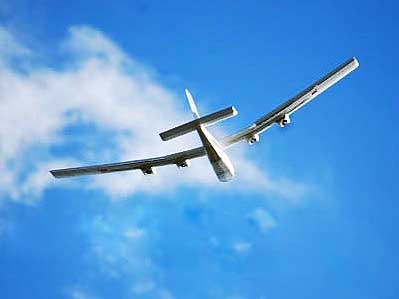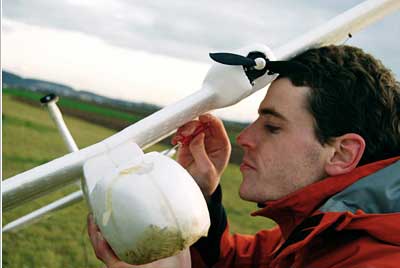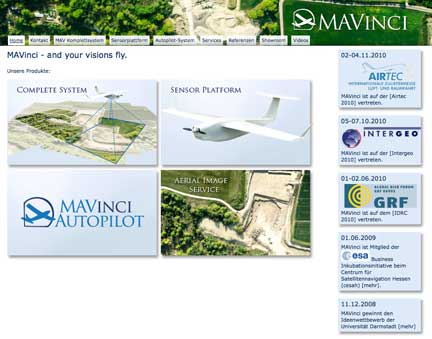
A MAVinci unmanned autonomous micro air vehicle (MAV) with a wingspan of less than two metres which is used to inspect land areas. Credits: MAVinci

A MAVinci micro air vehicle (MAV) is inspected before taking off. Credits: MAVinci
“The principles for the attitude determination of satellites and for autonomous aircraft such as MAVincis are identical, only the scale is different,” says ESA Flight Dynamics Engineer Michael Flegel. “Where a satellite might use the measured direction of the Sun, Earth or of known star patterns, the MAV aircraft will use the local magnetic field direction, the direction of ‘down’ and similar local quantities. Obtaining meaningful information from the data is an art and the expertise can be applied to both satellites and spacecraft alike.”
The autopilot controls the aircraft from takeoff to landing, and uses satellite navigation to follow a planned track, triggering the camera to image the target area. From the ground, the plane is followed by radio by a safety pilot who can take over the controls at anytime.


